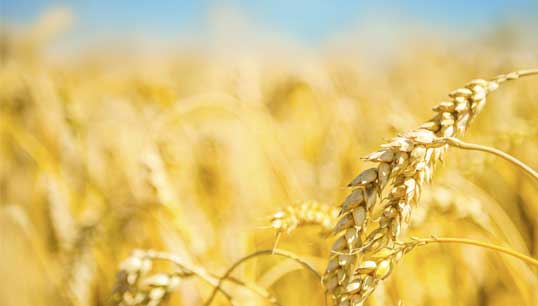Fruit and veggies are always stars in the public nutrition spotlight. Grains, on the other hand, are often treated like second-class citizens. With the gluten-free craze sweeping the nation, grains, as in wheat, rye and barley products, have been downright vilified. Is this rejection justified?
As the final installment in our blog post series on foods that truly impact everyday health, we dare to raise the caution flag. The Mayo Clinic says whole grains are essential to a healthy diet. But are all “whole grains” really “whole grains?” That’s where things get complicated.
Many brown loaves of bread on the store shelves say “whole grain.” Yet, a closer look at the label reveals it has only one more gram of fiber per serving than the pure, fluffy white loaf you’ve just shunned. A 2013 study conducted by the Harvard School of Public Health compared 545 whole grain products. Some of those products included the bright yellow “100% Whole Grain” stamp that is featured on more than 7,000 grocery products. This stamp is not regulated by any U.S. overseeing body. Companies pay a fee to use it. Researchers tracked a number of additional claims in their analysis. In the end, the study revealed that products with that bright yellow stamp were among the worst of all, containing more sugars and calories than counterparts!
What can you do, as you positively impact your health with conscious food choices? Talk to the dining staff about trading tricky commercial breads for real grains that won’t fake you out. You may feel sad for a bit about missing a fluffy white dinner roll, but we’re confident that after trying some richly delicious whole grain side dish alternatives, you’ll never look back. Make new friends in food that matters!
Great (really) Grains
Bulgur
This grain is so rich in fiber and protein, a serving delivers nearly 75 percent of your daily fiber requirement – AND 25 percent of the protein you need. Check out this fantastic Bulgur Salad recipe.
Whole Oats
Everyone knows this one. Make it a frequent visitor at your breakfast or lunch table. Note, however, that you’ve got to choose whole oats – instant oats are often refined and include other ingredients that mess with perfection.
Whole Grain Barley
High cholesterol? You may want to bring this powerful grain into your life. A USDA study found that a half cup of whole barley eaten regularly lowered participants’ cholesterol levels by 10 percent compared to non-barley eaters in the study. This is another fantastic side dish starter or breakfast food! Add dried fruit and a little honey for breakfast, or add savories like mushrooms or veggies at dinner.
It’s fun and rewarding to take charge of our premise that “You really ARE what you eat.”





